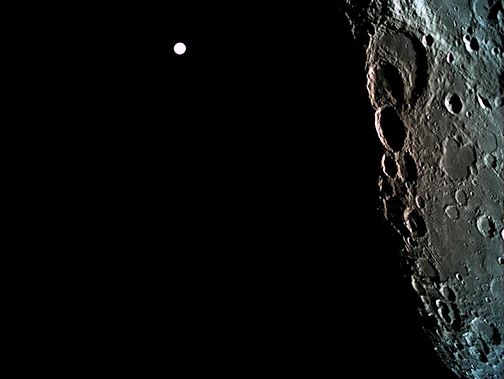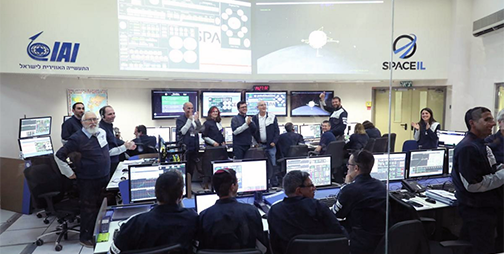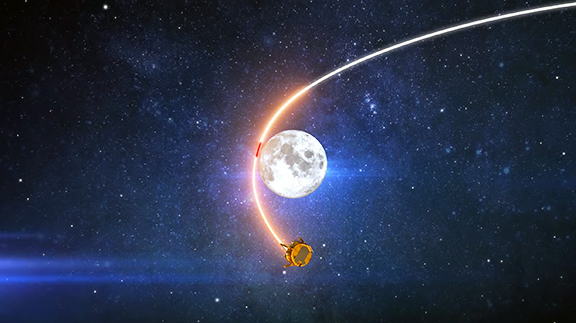
UPDATE #14 — FINAL
The Jerusalem Post online news site is reporting that, even though the Israeli Beresheet spacecraft did travel and orbit the moon, the final maneuver — the landing — was unable to arrive on the lunar surface.
As the spacecraft approached the moon, SpaceIL lost contact with Beresheet several times, according to the infosite. The scientists kept hope as the connection was restored; however, just minutes before the spacecraft was supposed to touch down in the northeastern part of the Sea of Serenity, contact was lost once again and the craft crashed on the moon.
Prime Minister Benjamin Netanyahu, who was at hand to watch the landing, said that Israel will continue to try landing on the moon. Minutes later Netanyahu took to the microphone again to promise "Israel will land on the moon!"
Tens of thousands of Israelis had stayed up until the wee hours of the morning to watch the lunar lander’s launch from Cape Canaveral in Florida on February 21 aboard a SpaceX Falcon 9 rocket. Although a disappointment for the nation of Israel, SpaceIL and the Israel Aerospace Industries, rest assured this mission will become a learning experience that will ultimately lead to success.

All is not lost — XPRIZE is recognizing SpaceIL's achievement with a $1 million Moonshot Award for this groundbreaking attempt ... the company's team's successful entry into lunar orbit and the attempt to soft land on the lunar surface certainly captured the public's attention and imagination and should inspire the next generation of scientists and explorers... as XPRIZE so aptly stated, this mission has propelled the commercial space industry forward.
Preliminary data supplied by the engineering teams of SpaceIL and Israel Aerospace Industries (IAI) suggests a technical glitch in one of Beresheet's components triggered the chain of events yesterday that caused the main engine of the spacecraft to malfunction. Without the main engine working properly, it was impossible to stop Beresheet's velocity. Beresheet overcame the issue by restarting the engine. However, by that time, its velocity was too high to slow down and the landing could not be completed as planned.
UPDATE #13

Two new videos that explain Beresheet's landing process are now available for viewing...
Video to the left at this direct link...
Video to the right at this direct link...
UPDATE #11

Beresheet's image capture of the far side of the moon, with Earth in the background — also at 470 km from the moon.
Photo is courtesy of Eliran Avital.

SpaceIL and IAI engineering teams in the control room after the lunar capture maneuver by Beresheet.
Photo is courtesy of the mentioned companies.
- The spacecraft has performed seven maneuvers
- The spacecraft has traveled 5.5 million km (over 3.4 million miles) in its orbits and will travel one million more while orbiting the moon
- Beresheet made 12.5 Earth orbits, including seven at an altitude of 70,000 km (nearly 44,000 miles), two at an altitude of 131,000 km (nearly 814,000 miles), two at an altitude of 265,000 km (nearly 165,000 miles) and 1.5 at 420,000 km (over 260,000 miles)
- The craft has used 80 kg (176 pounds) of fuel so far
- The spacecraft has performed seven maneuvers
- The spacecraft has traveled 5.5 million km (over 3.4 million miles) in its orbits and will travel one million more while orbiting the moon
- Beresheet made 12.5 Earth orbits, including seven at an altitude of 70,000 km (nearly 44,000 miles), two at an altitude of 131,000 km (nearly 814,000 miles), two at an altitude of 265,000 km (nearly 165,000 miles) and 1.5 at 420,000 km (over 260,000 miles)
- The craft has used 80 kg (176 pounds) of fuel, so far.


